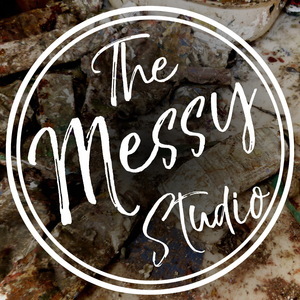Intuitive Color
Episode 103 · December 21st, 2019 · 31 mins 28 secs
About this Episode
Intuitive Color
Color is a very powerful influence in our everyday lives, and certainly in our art. It is the most studied of the visual elements by experts outside of the field of art--in biology, psychology, and in cultural studies, to name a few. As artists, we may work with color in an intuitive way, or more intellectually-- each of us finding a way that suits us. There is no single correct system for using color. Our individual approach is linked to our own characters and personalities, and is often a strong aspect of our personal visual voice.
How important is it to study and apply color theory and systems? Although a basic introduction to color is standard in art school courses, Rebecca attended several different schools and somehow missed this part of the cirriculum. As a result, her approach to color is mostly intuitive, developed over time through practice and observation. Trial and error builds experience, and only through experience can we really grasp the intricacies of color.
Many self-taught artists feel insecure about color because they are aware of the scientific and technical aspects of color, and feel it is something that must be studied at length as one normally does in art school. It is true that the formulas and systems for color mixing can be fascinating. There is a rich history of color, paint, and pigment throughout history. Also, some art media require specific knowledge for layering colors, such as watercolor or printmaking. But intuitive use of color can also be very effective especially when combined with some very basic information and vocabulary that is easily studied, along with awarenss of what your intentions are regarding color.
In spite of the dramatic impact color has on our work, we can easily become habitual in our use of color, and fail to be led by intutiion into more effective ways of using it. One tip is to notice which colors move and affect you, which may be different than the ones you find appealing and use most often. Many people speak of "my colors" but these may not be the ones that provide contrast or depth for on the work. Do some experimenting and exploring with colors that challenge you or excite you. Consider what your color choices communciate to others and whether or not that is what you want to convey. Are there some changes, even small ones, that could bring another level of meaning to your work?
www.messystudiopodcast.com
www.rebeccacrowell.com
www.squeegeepress.com
www.facebook.com/messystudiopodcast
